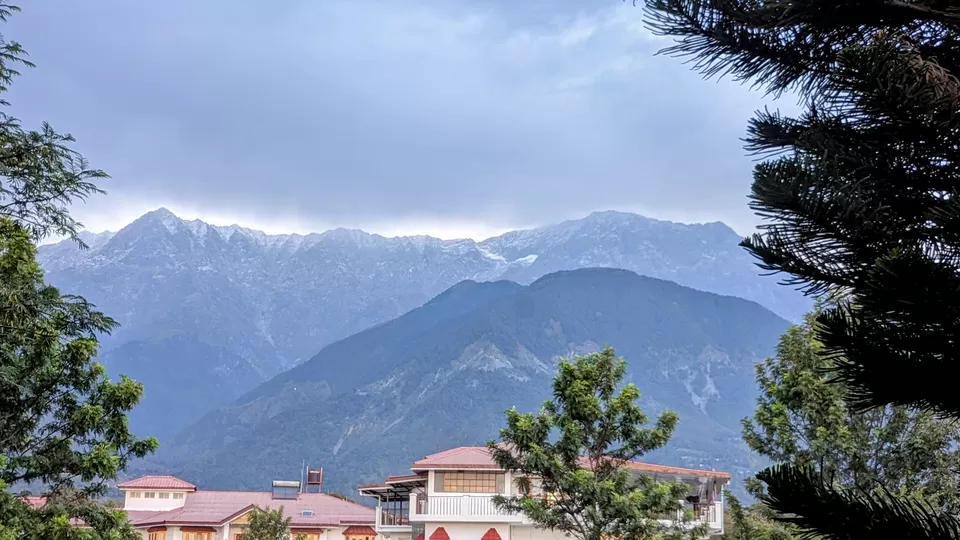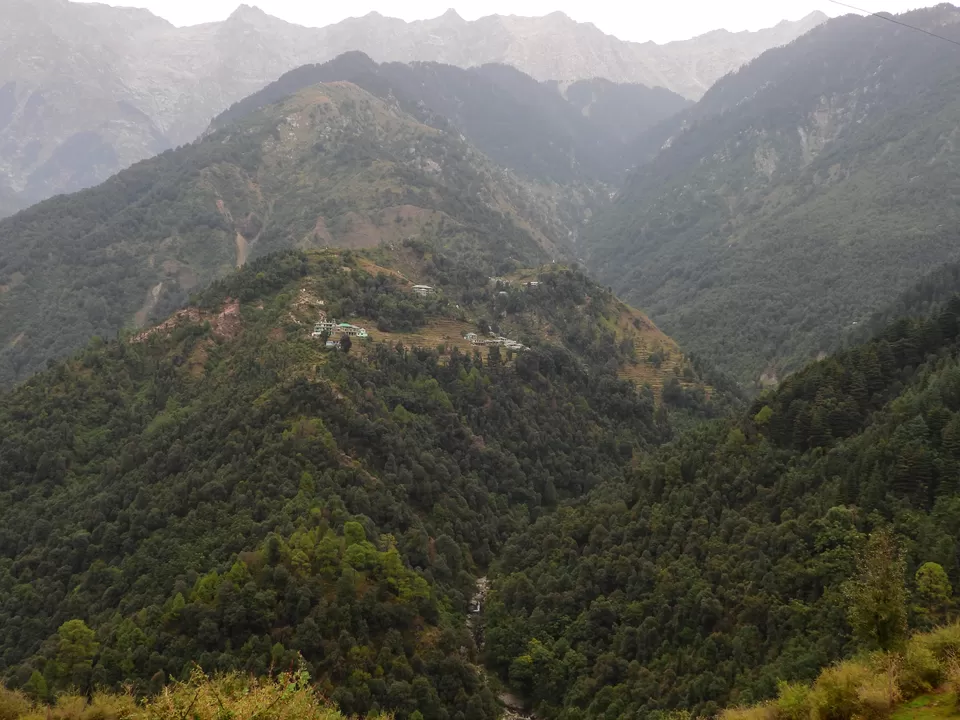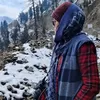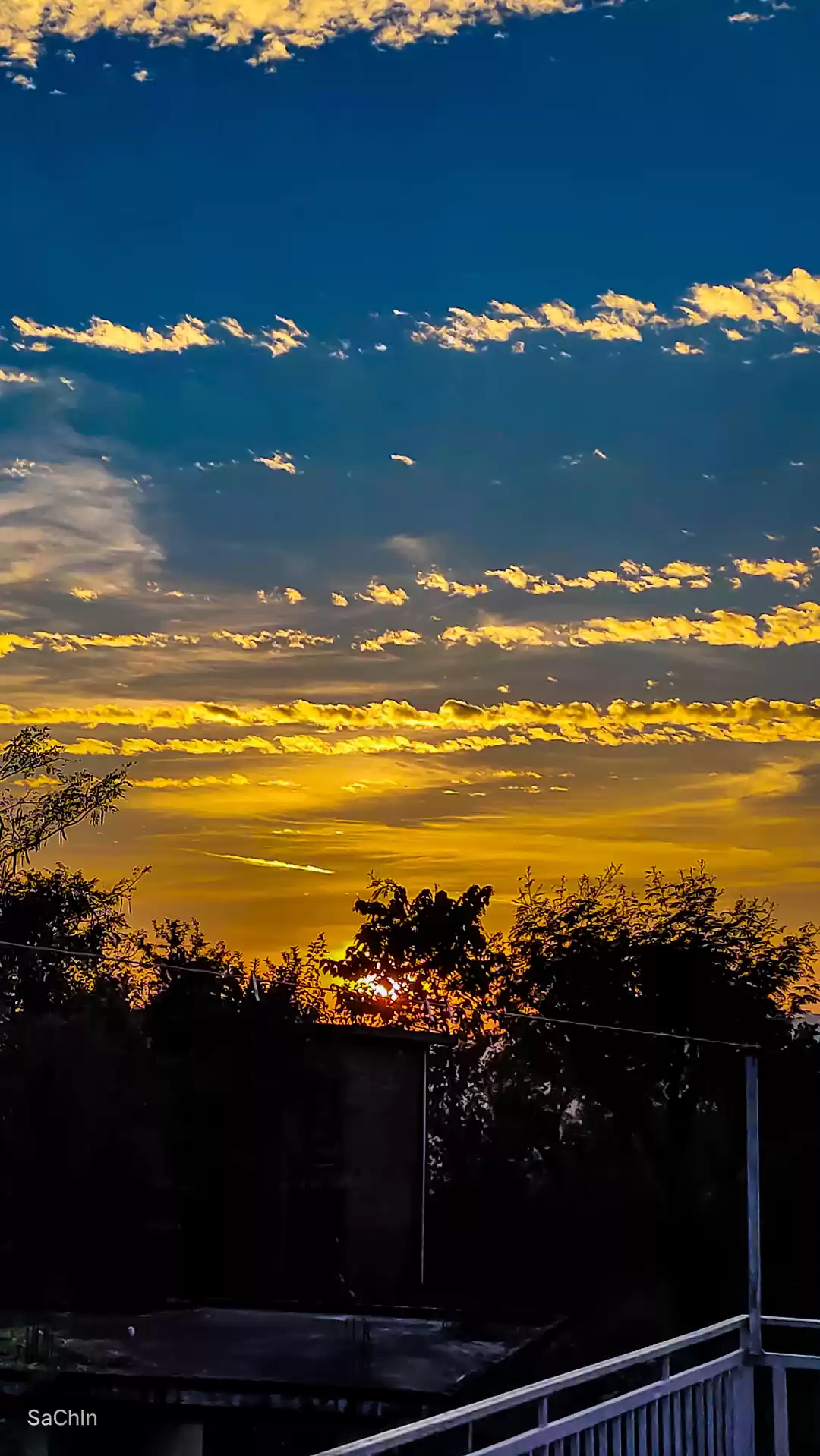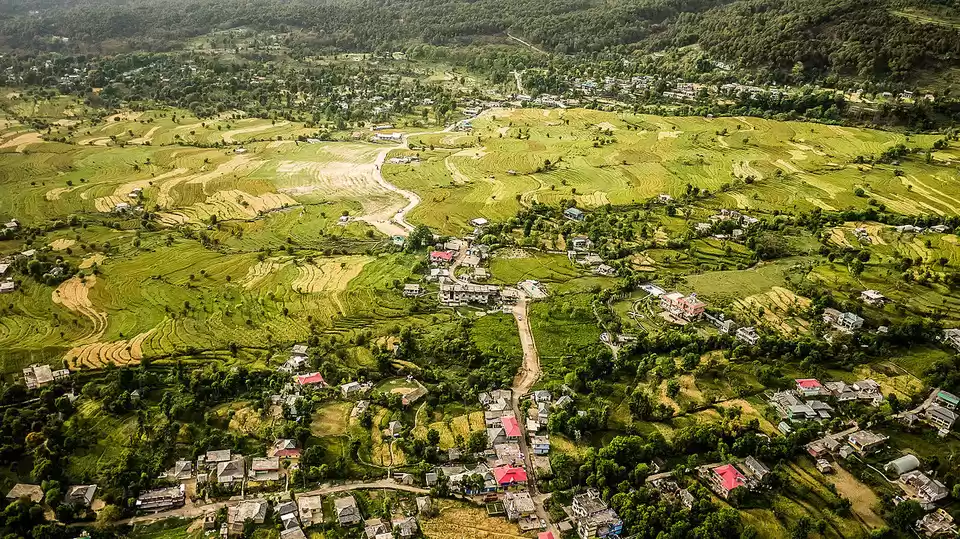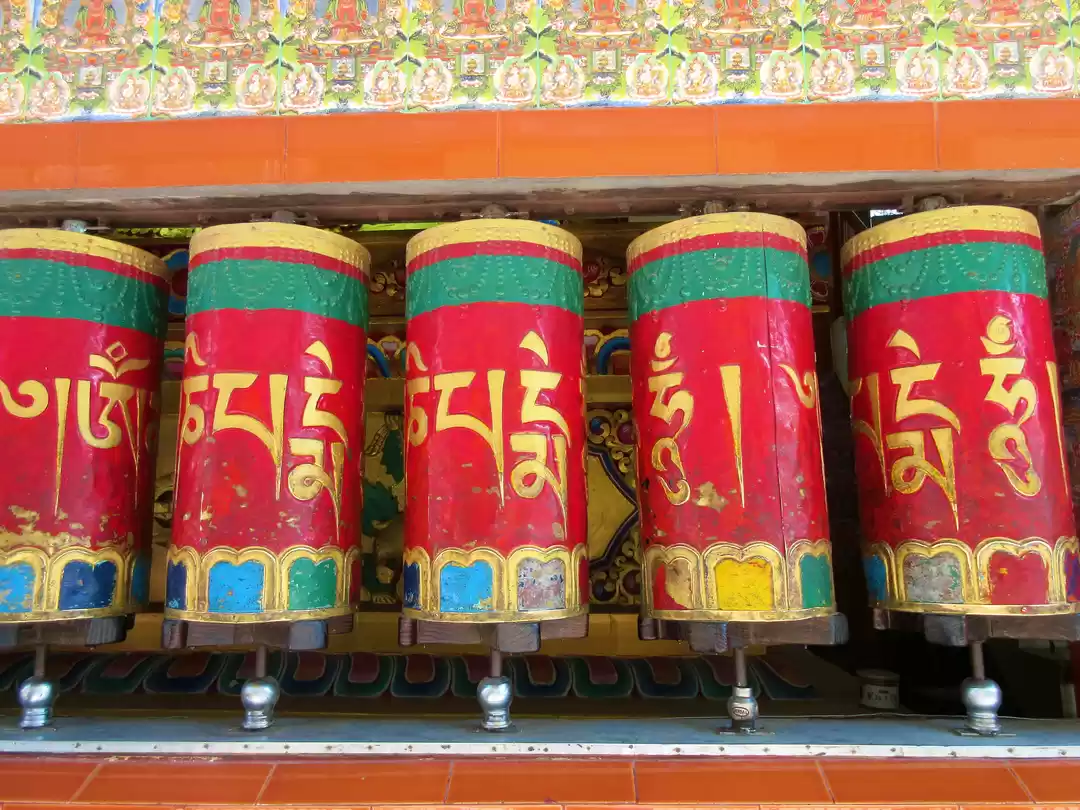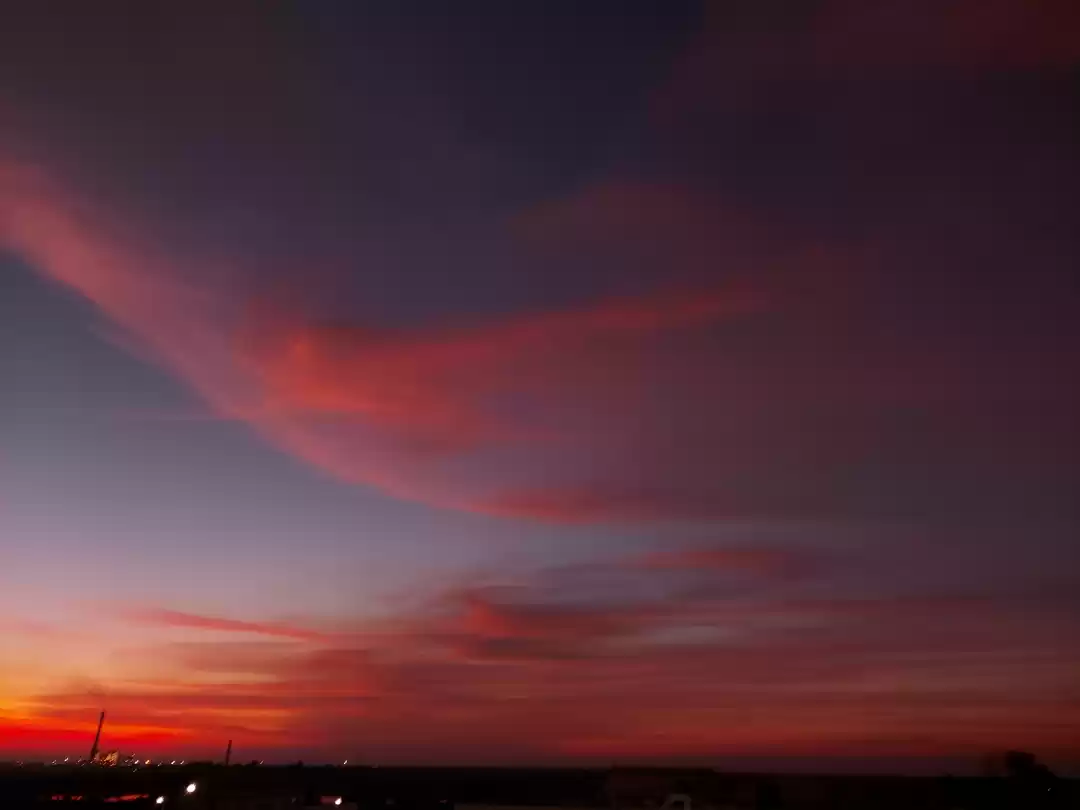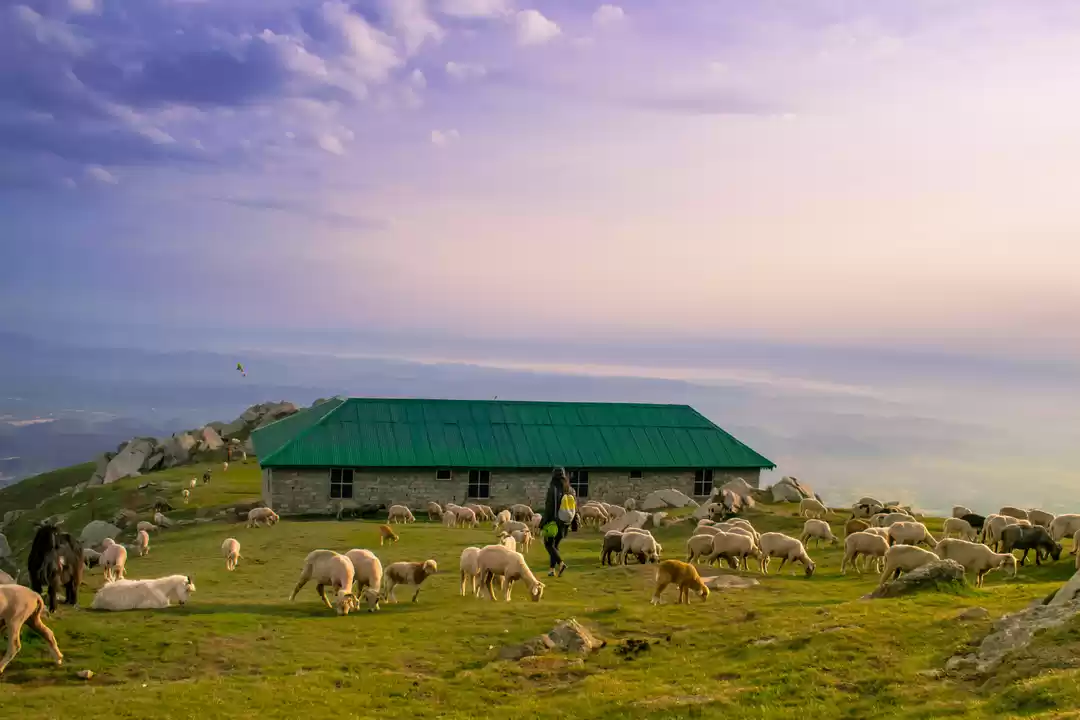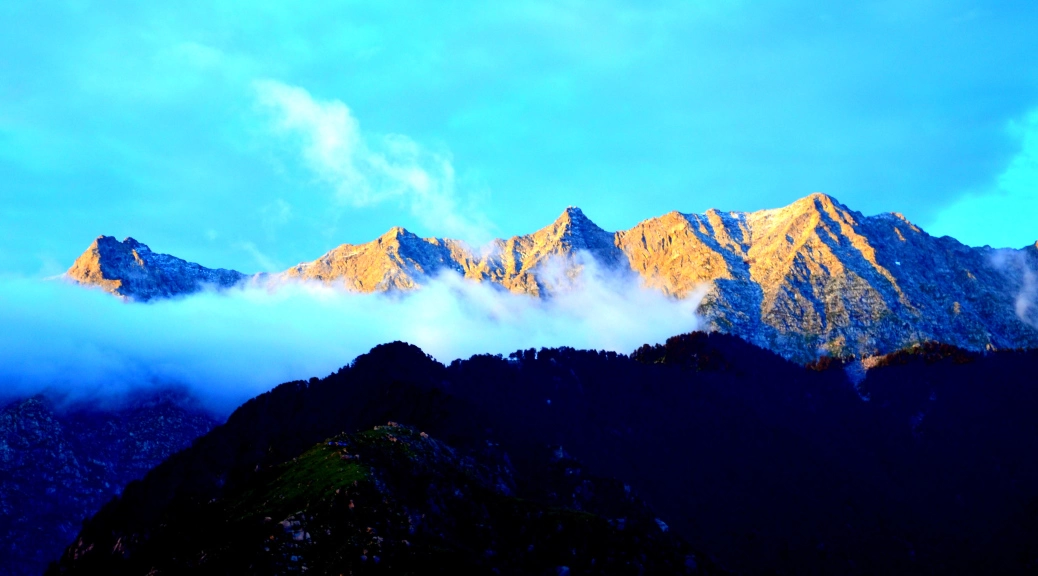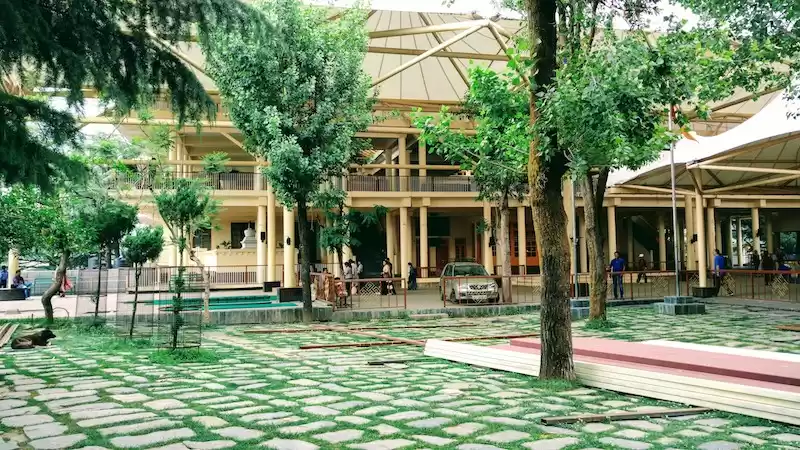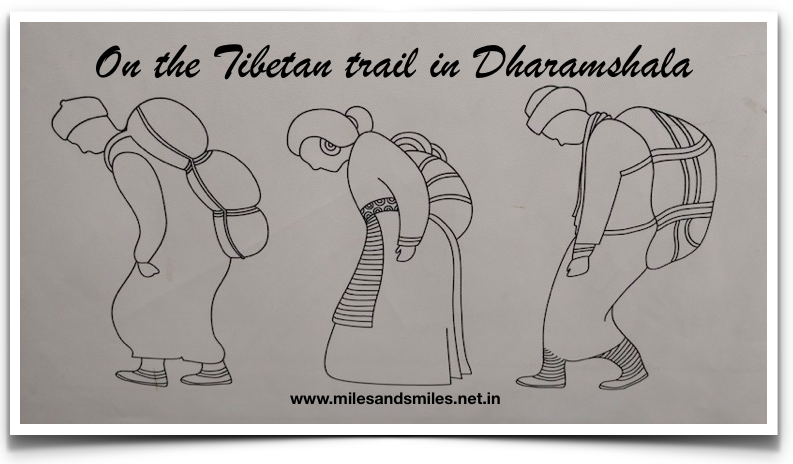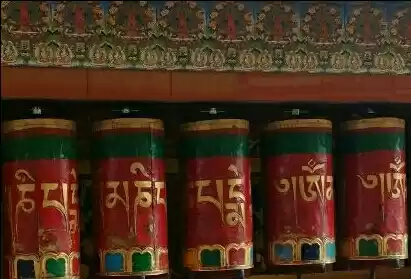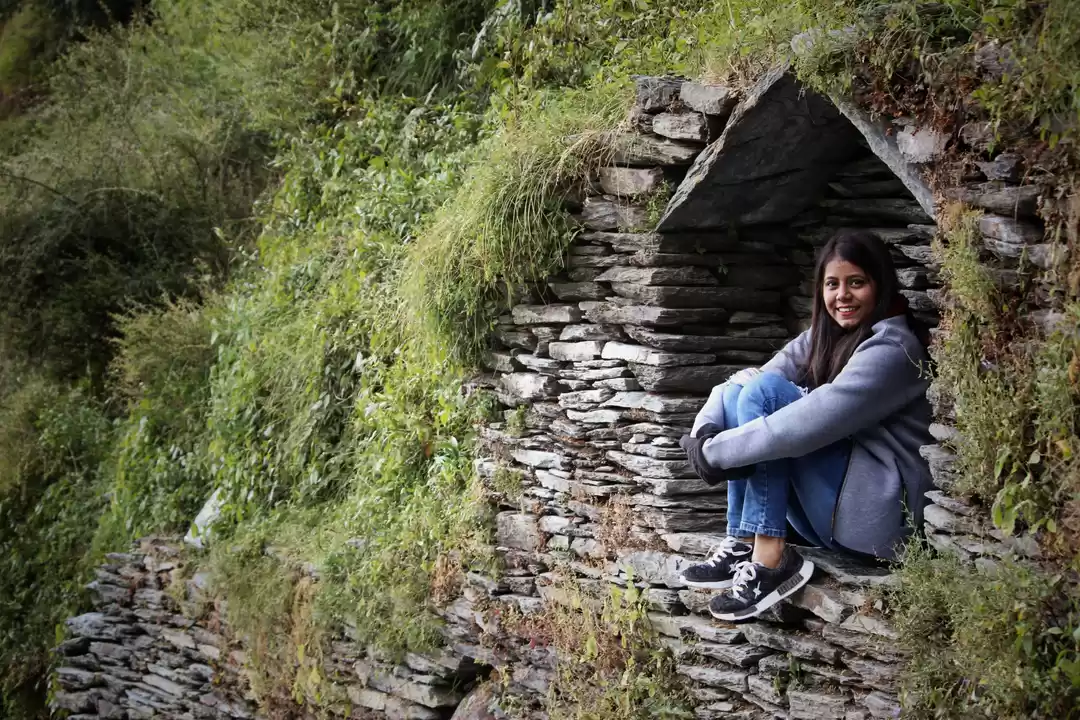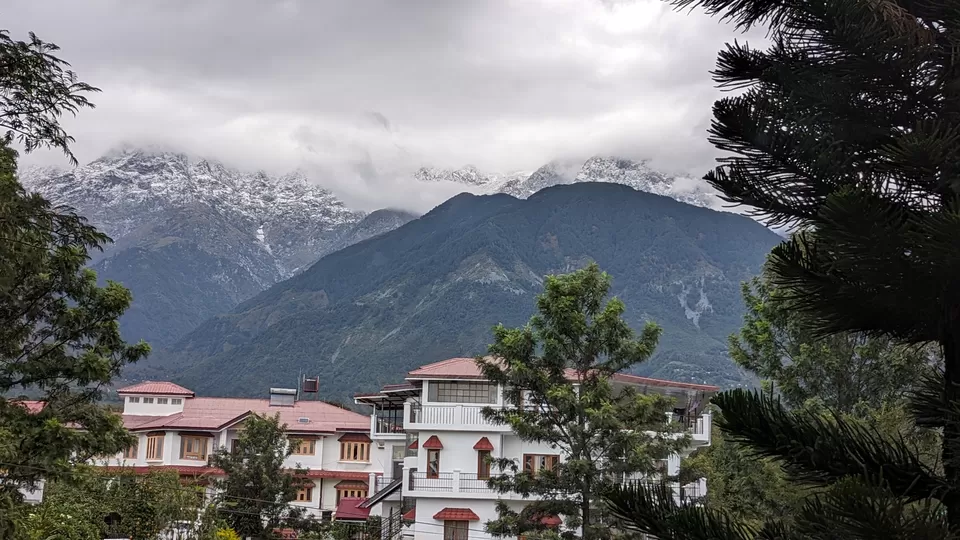
Day 1. Train to Pathankot
The overnight train from Delhi to Pathankot was uneventful except for the view through the open door of our compartment the next morning - vast fields and tall trees rolled by, kissed by the rays of the rising Sun - still soft and sluggish in the morning chill.
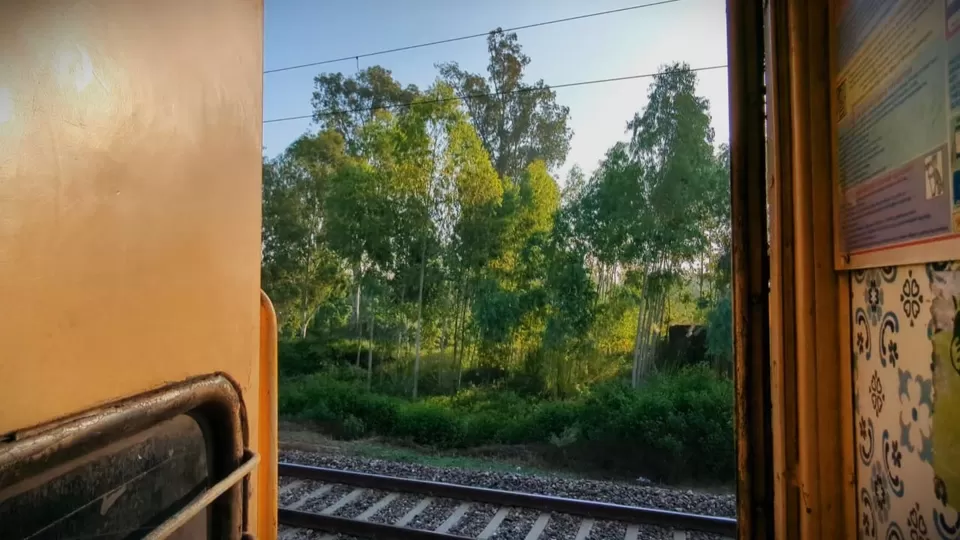
We were met by the Club Mahindra cab driver at Pathankot station. We drove past fields and small dusty towns till we stopped for lunch at Jyoti Hotel, Kandwal in Kangra district of Himachal Pradesh. The food was good and the friendly waiter - Sanjeev Singh told us about the various dialects spoken in Himachal, Although every former princely state within Himachal Pradesh has a local dialect named after it such as Kangri, Chambeli, and so on, Hindi (the official state language) and Pahari are the principal languages. These are all Indo-Aryan languages. In Lahaul and Spiti and in Kinnaur, however, the most widely spoken languages belong to the Sino-Tibetan family. Mr. Singh explained that like the various streams that flow through Himachal a dialect gradually changes and merges with another dialect as we cross from one district to another. The dialect that Sanjeev Singh spoke with the hotel staff sounded like a mixture of Punjabi and Dogri.


The landscape came alive as we approached the Chambi bridge along Mandi-Pathankot road: the Dhauladaar range began to appear along the horizon. First a bit hesitant, hiding behind a haze, like a shy bride, then slowly lifting her veil to reveal her majestic beauty - Slatey grey peaks with streaks of white left behind by the last snow fall. The tributaries of the Beas river also began to appear running shallow streams running along stony banks rocky boulders strewn across its bed which perhaps were part of some Himalayan glaciar some million years ago.
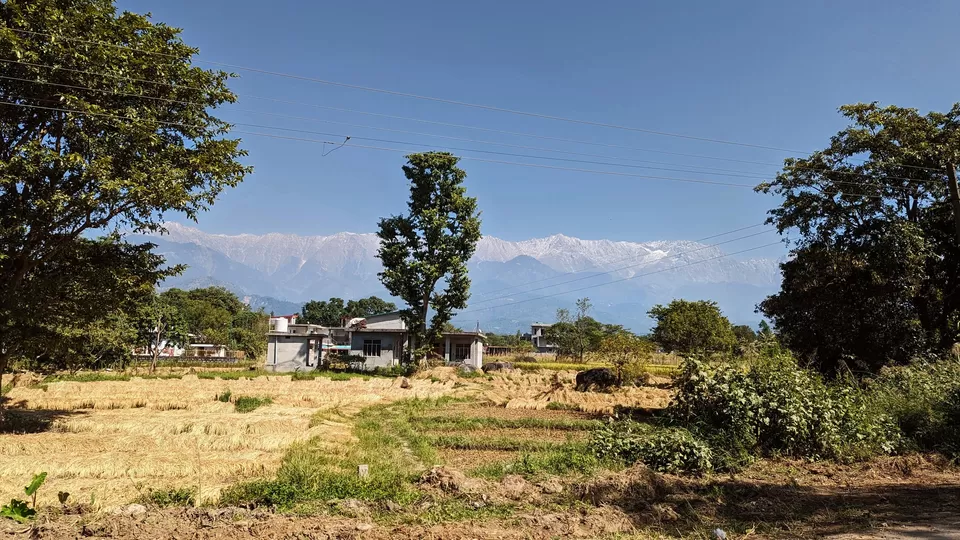
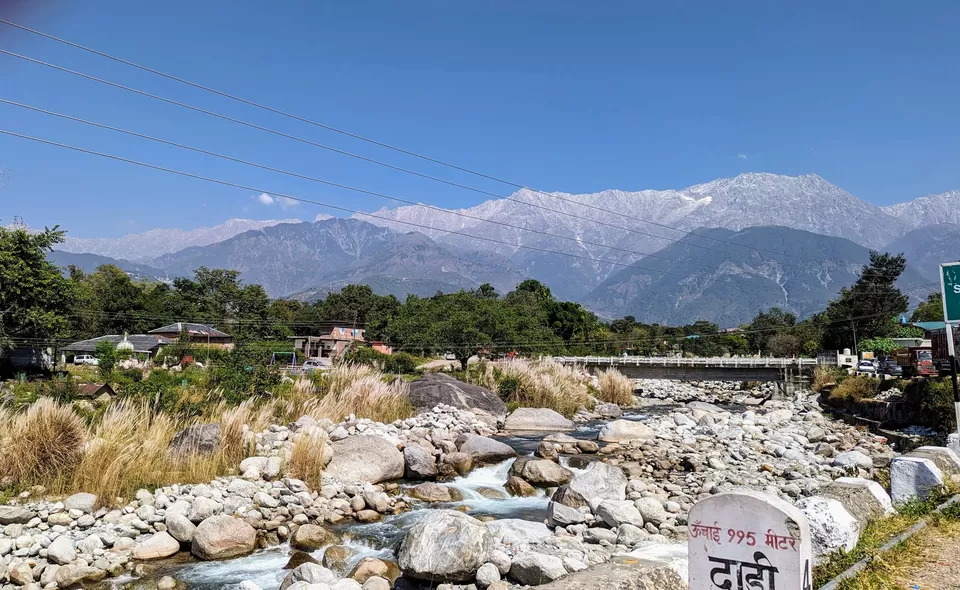
It was lunch time when we reached Club Mahindra Dharamshala, and as we checked into our rooms, we were greeted with an amazing view of the Dauladhar range through the window.
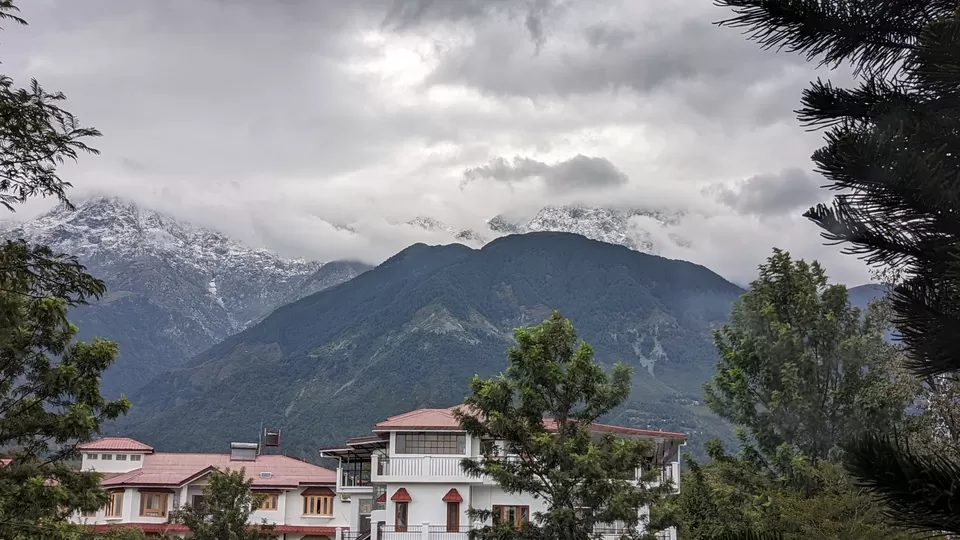
Day 2. Guided walking tour of 'Little Tibet'
The next day we began our walking tour of McLeod Ganj arranged by Himachal by Locals with our English speaking guide, Vikas. McLeod Ganj was named after Donald Friell McLeod, a Lieutenant Governor of Punjab; the suffix ganj is a common Persian word used for "neighbourhood".
Vikas explained in detail how India was a willing host to His Highness Dalai Lama and Tibetan refugees, who were fleeing from persecution in their own country by China. He also gave us an account of all major Buddhist buildings and monasteries in McLeod Ganj. Over the years McLeod Ganj earned the name of 'Little Tibet' as Libraries, markets and schools and the headquarters of Tibetan Government-in-exile appeared here.

Thekchen Choling Temple Complex also known as Dalai Lama's Temple complex, is the home for His Holiness Dalai Lama. It is among the world-renowned religious centers and is thronged by Buddhist pilgrims throughout the year. Tsuglagkhang Monastery is a beautifully built structure. This is more like a temple along with being a residential complex for His Holiness and his followers.

The complex houses Tibet Museum, Tsuglagkhang Temple, and Namgyal Gompa. The monastery deals with the training of monks for rituals associated with holy shrine, whereas the temple is a chief place of worship. A beautifully decorated statue of Lord Buddha along with beautiful statues of Padmasambhava and Avalokiteshvara are housed in the temple. It is open from sunrise to sunset each day and is visited by thousands of tourists and devotees.

True to the Dalai Lamas principles of non-violence, the elegant two-storeyed temple, with its large square overlooking his palace which is actually a modest cottage where he lives was built without chopping a single tree. The temple rests, in fact, on some un-usual columns trunks of deodars which are still growing, protected by adjustable iron rings.
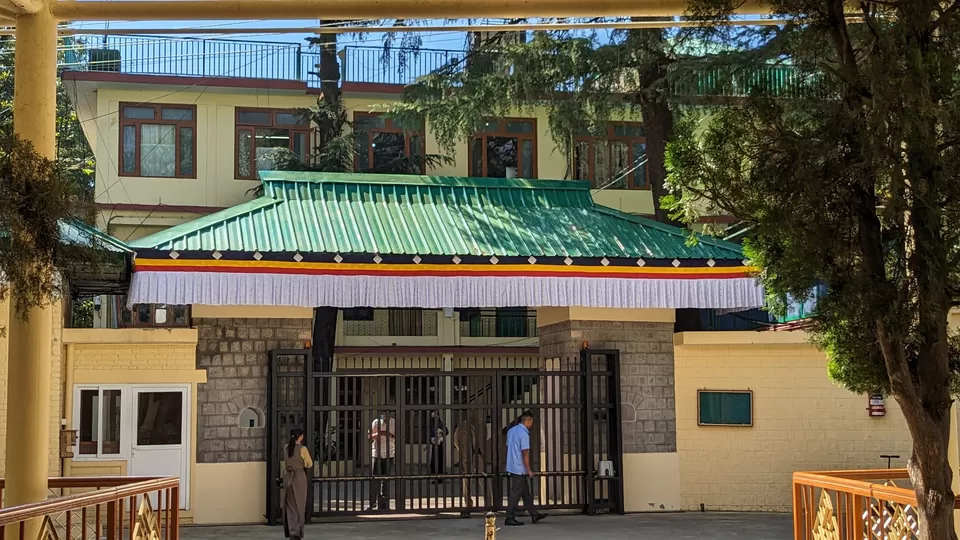
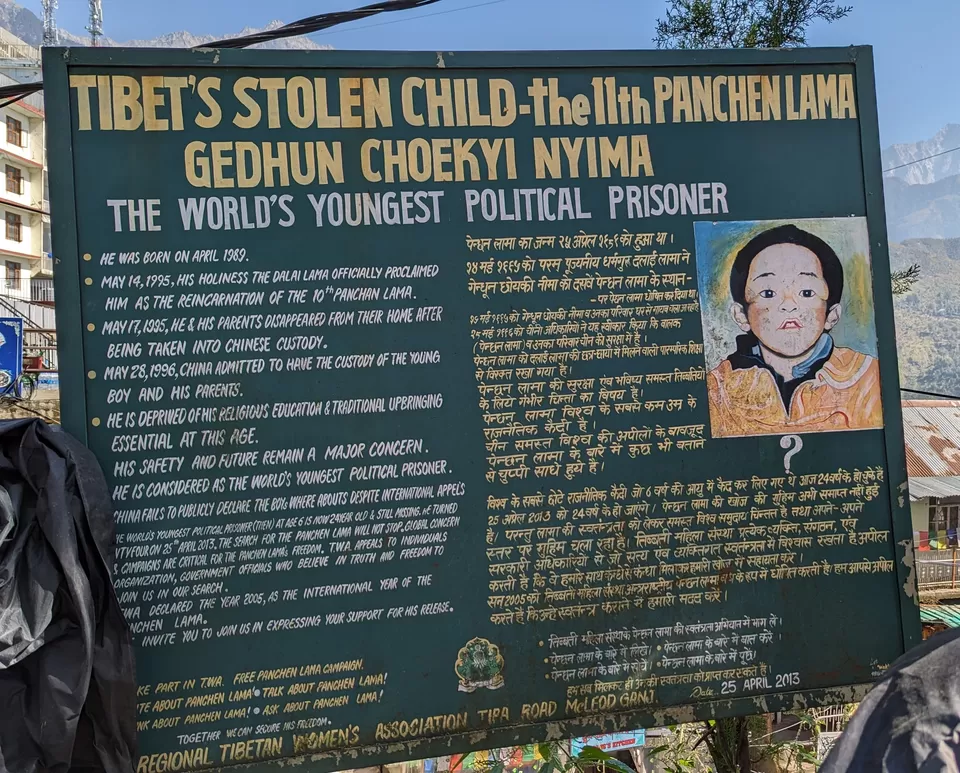
Gedhun Choekyi Nyima (born 25 April 1989) is the 11th Panchen Lama belonging to the Gelugpa school of Tibetan Buddhism, as recognized and announced by the 14th Dalai Lama on 14 May 1995. Three days later on 17 May, the 6-year-old Panchen Lama was kidnapped and forcibly disappeared by the Chinese government.
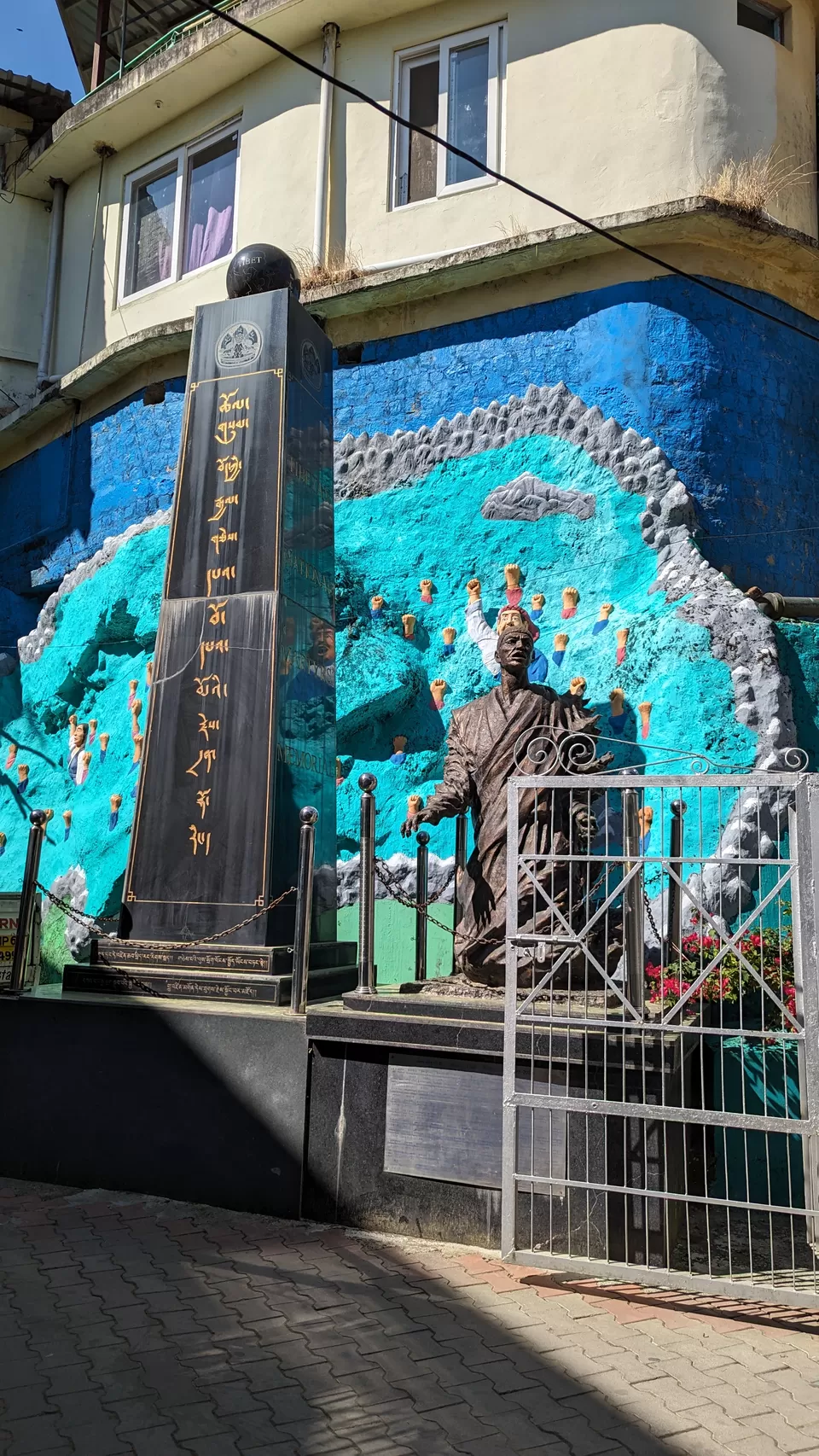
Memorial to Tibetan martyrs: One of the saddest things shown here is the recent phenomenon of young people burning themselves to death in protest at what China is doing. As of May 2022, 160 monks, nuns, and ordinary people have self-immolated in Tibet since 27 February 2009, when Tapey, a young monk from Kirti Monastery, set himself on fire in the marketplace in Ngawa City, Ngawa County, Sichuan.
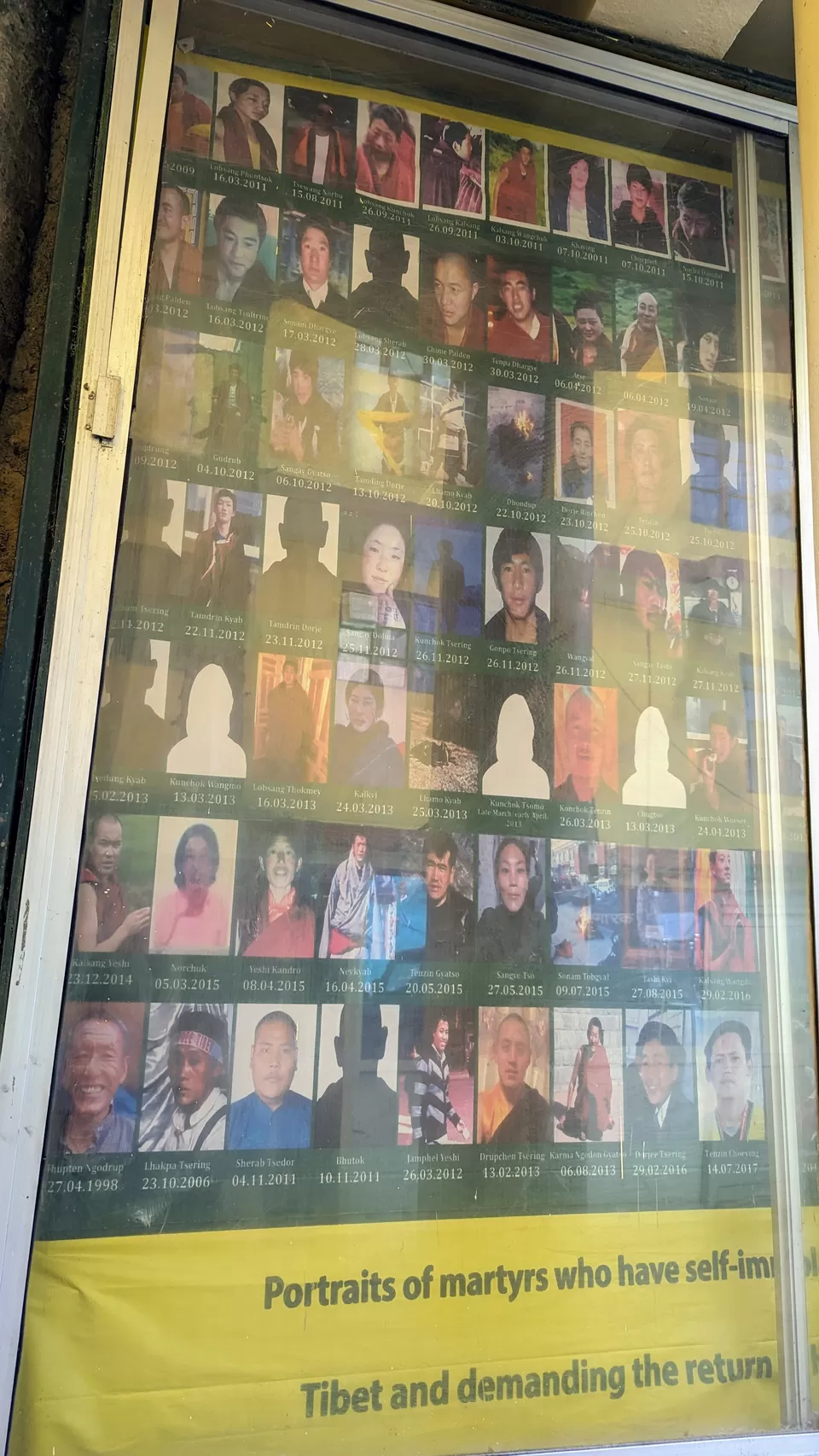

A Tibetan restaurant and souvenir shop at the temple complex.


The Fasting Buddha: After reaching enlightenment at Bodhgaya, Shakyamuni meditated and fasted for forty-nine days. Thus, showing him as an emaciated renouncer relates to his enlightenment and his status as a yogic ascetic who has ultimate control over his body.
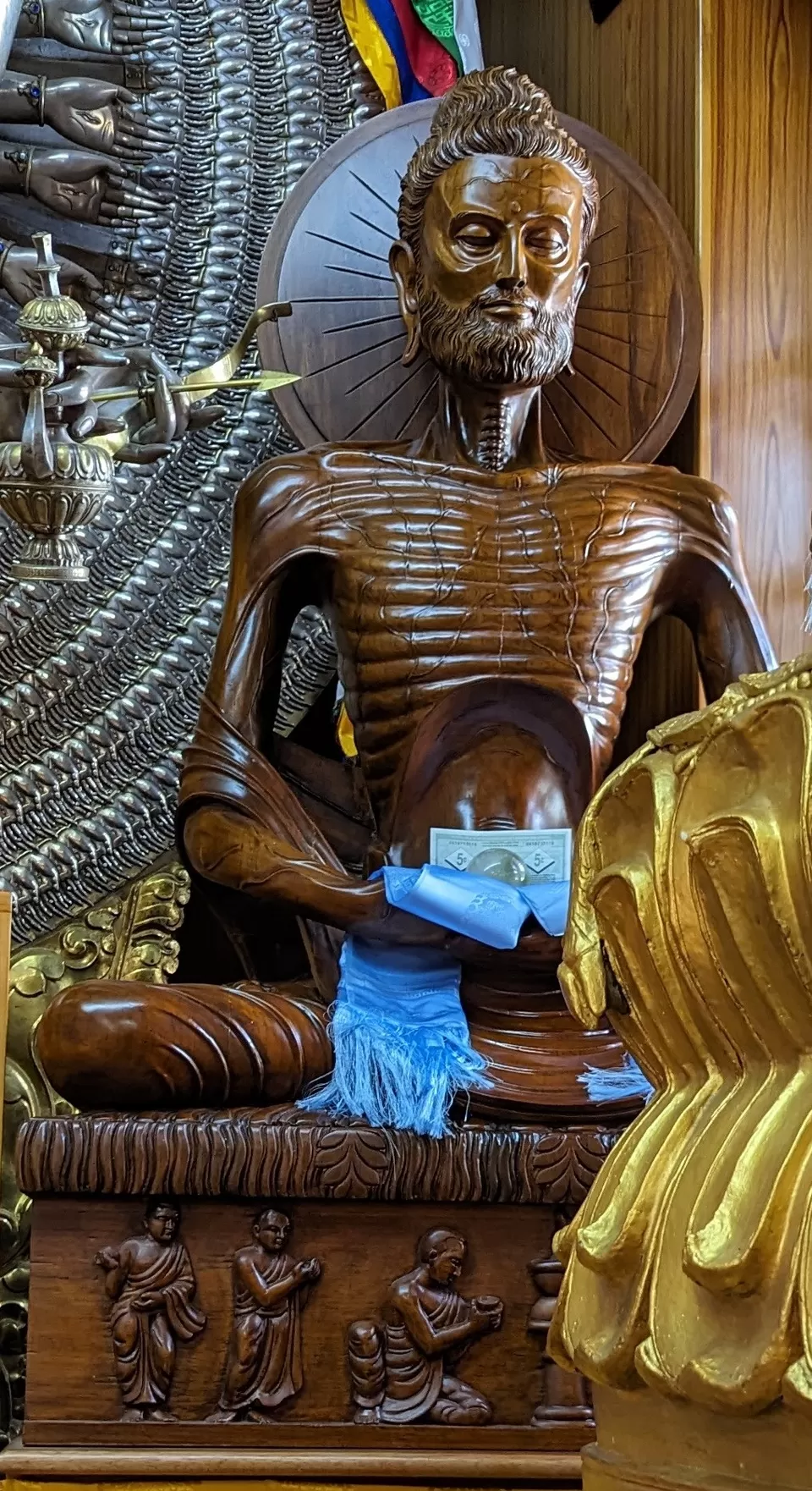
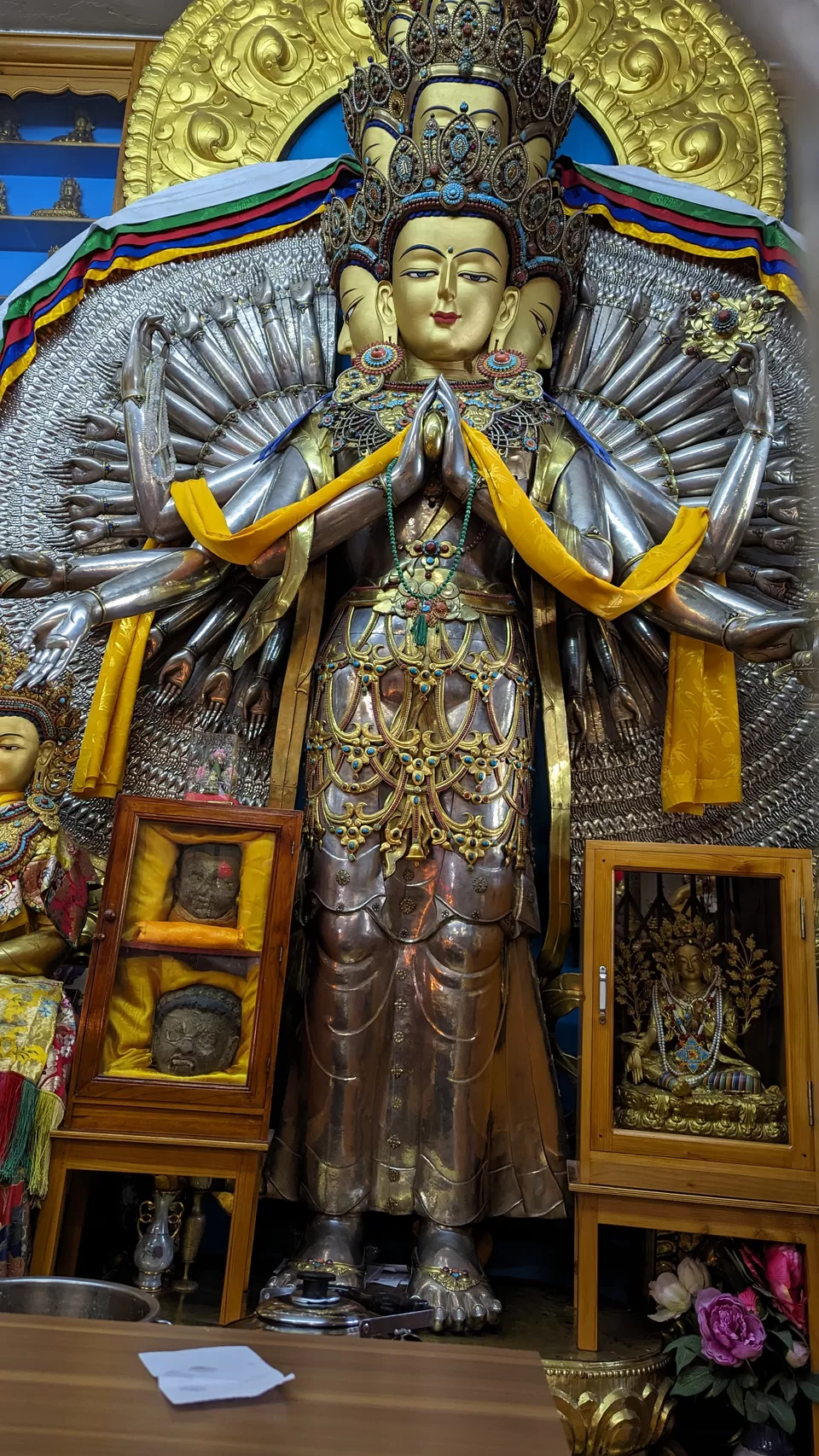
Avalokiteshvara Bodhisattva is the embodiment of the virtue of compassion and became the most important deity in Buddhism around the sixth century C.E. Its Chinese name is Guanyin, and is often depicted as female in China. One reason for this gender fluidity is due to the way the Bodhisattva has the ability to manifest on earth in many different forms. One of Avalokitesvara's many forms is Padmapani Lokesvara, which means “Lord with a Lotus in his Hand.”
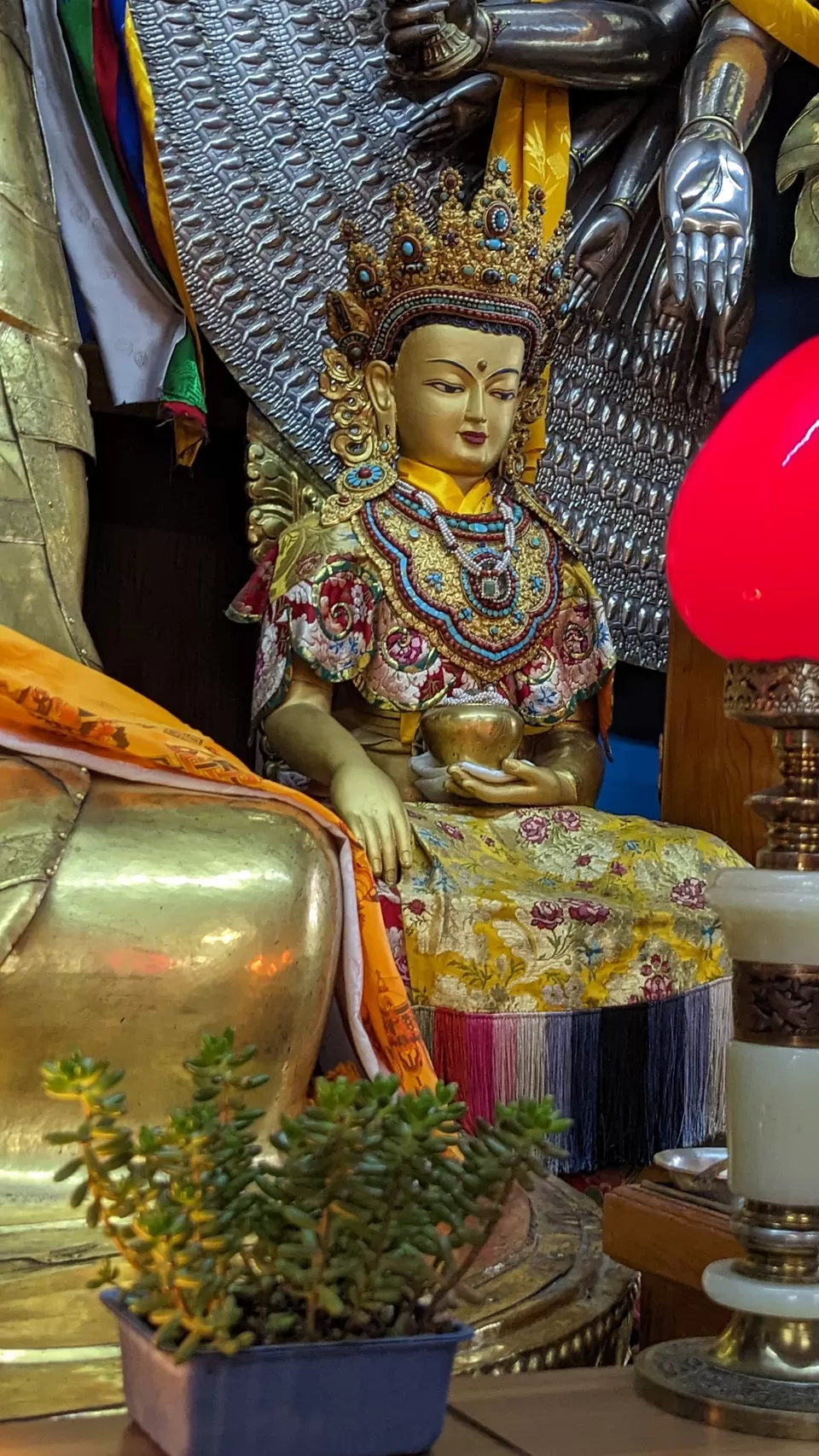
Maitreya Buddha is regarded as the future Buddha of this world in Buddhist eschatology. As the fifth and final Buddha of the current kalpa, Maitreya's teachings will be focused around re-establishing the dharma.
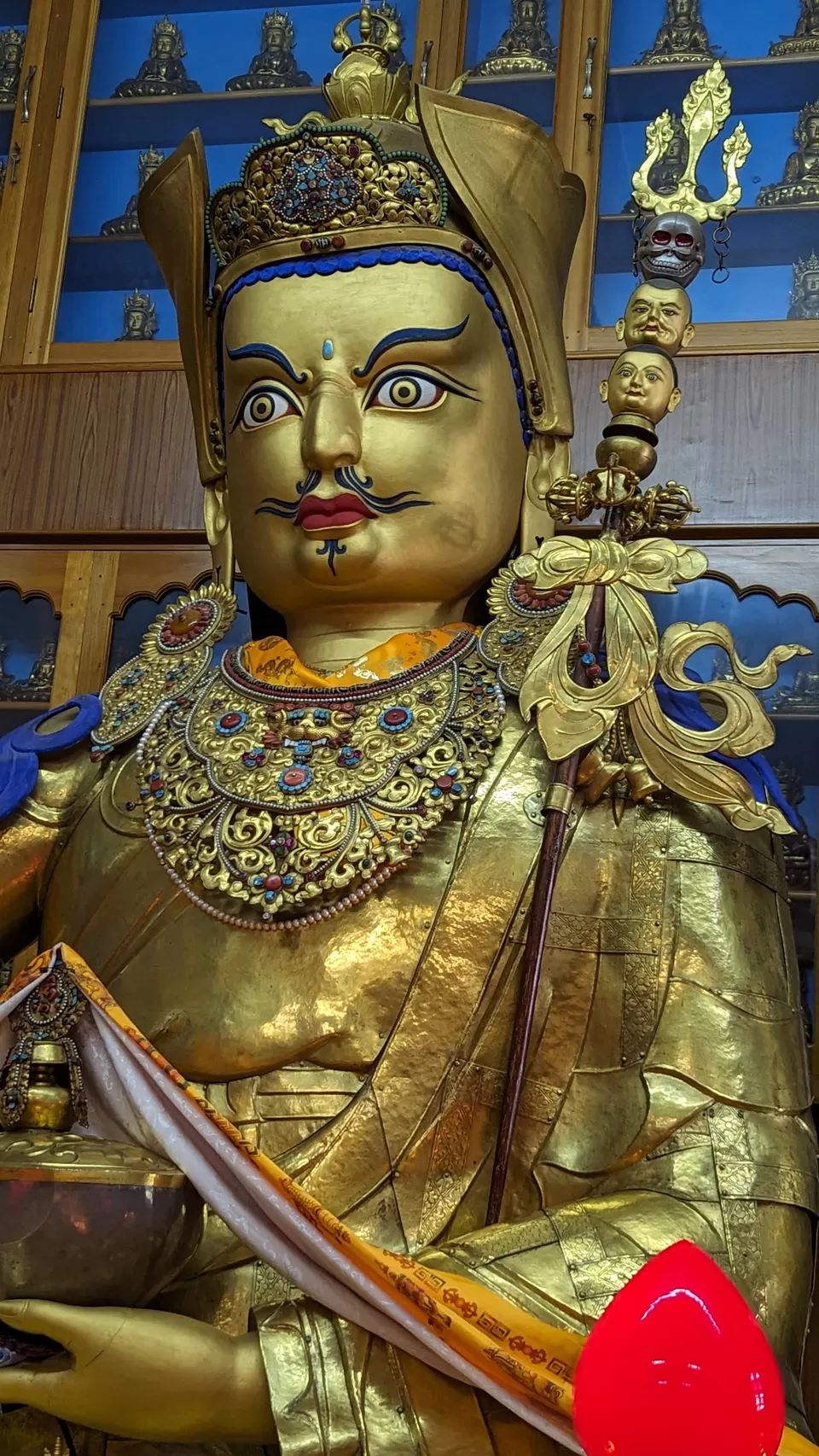
Padmasambhāva also called Guru Rimpoche, Tibetan Slob-dpon (“Teacher”), or Padma ’Byung-gnas (“Lotus Born”), (flourished 8th century), legendary Indian Buddhist mystic who introduced Tantric Buddhism to Tibet and who is credited with establishing the first Buddhist monastery there.
According to tradition, he was a native of Udyāna (now Swat, Pak.), an area famed for its magicians. Padmasambhava was a Tantrist and a member of the Yogācāra sect and taught at Nalanda, a centre of Buddhist studies in India. He was invited to Tibet in 747 by King Thī-srong-detsan and arrived at Samye (Bsan-yas), where he is said to have exorcised demons that were inhibiting the construction of a Buddhist monastery by causing earthquakes. He supervised the completion of the monastery in 749.
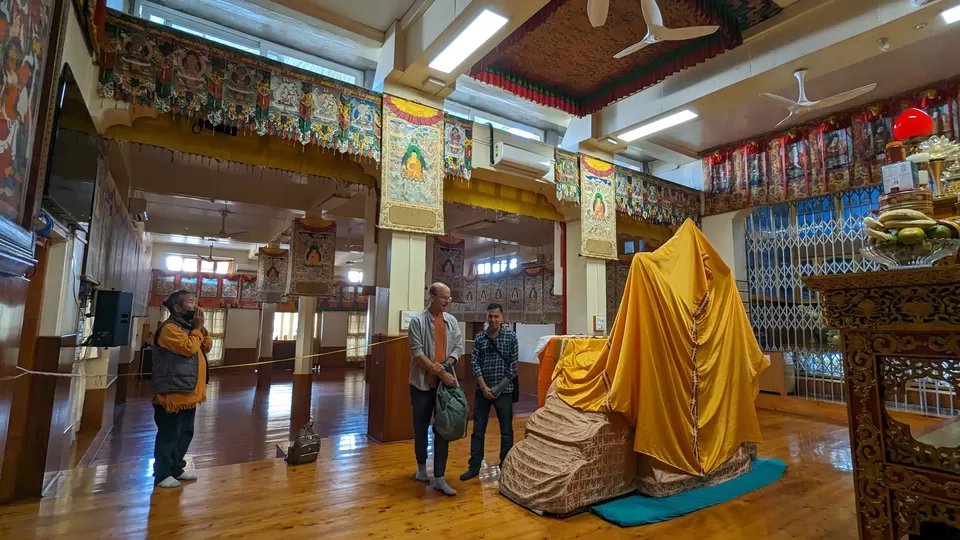
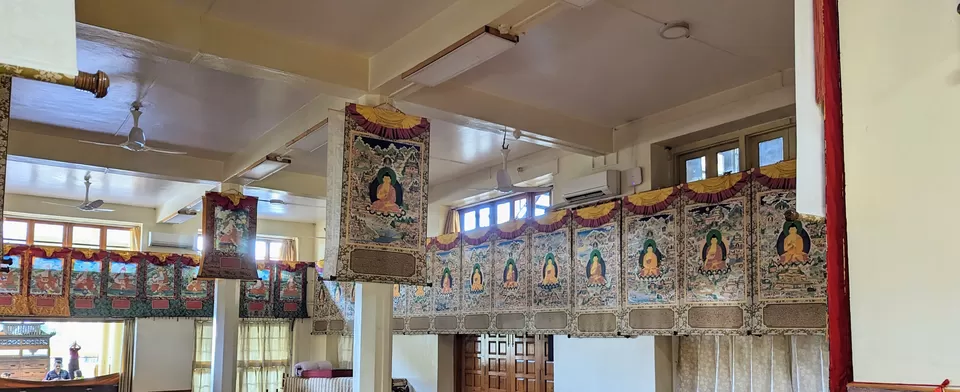
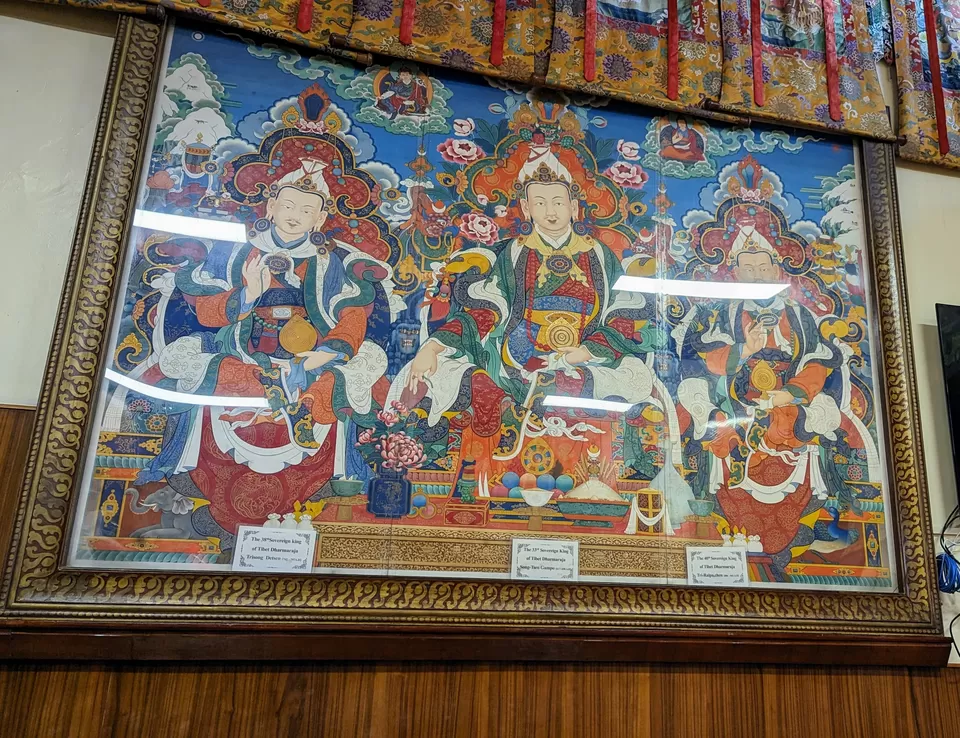
What fascinated me the most was the influence of Tantra and Bon religion in Tibetan Buddhism. The lesser known world of Tibetan Buddhism consists of a magical world of Gods, Demigods, Demons, Sages, and Enlightened Kings. In Tibetan Buddhism we find the magical practices of Central Asia with the philosophical profundities of India and China. This was clearly evident in the frescos and murals and thangkas that are hung in various monasteries here. Thangka roughly translates to “recorded message” in Tibetan and is an ancient form of Buddhist art that originated in Tibet in the 11th century. They are usually painted on silk or cotton vertically orientated scrolls, with a brocade frame and are used as a teaching and meditation tool by religious scholars.
In early, records, "bon" denotes a particular type of priest who performed rituals to propitiate local spirits and ensure the well-being of the dead in the afterlife. It is a part of the Tibetan folk religion and encompasses indigenous beliefs and practices, many of which predate the introduction of Buddhism.
Buddhism is famous for its rationality and contemplative practices. But few know that there are also chants to protective deities-fabulous many-armed beings who inhabit the world of Central Asian mythology. There are seasonal religious practices which connect the disciple with the principles of earth and sky.
Adding to that are shamanistic divination practices to lead the devotee and help them make difficult decisions, using mirrors or dice, or an arrow hung with pennants, or a rosary made of polished bone.

The early stupas and entrances to cave temples were decorated with local male and female deities (usually referred to as yakshas and yakshinis) who are an integral part of Tantrik aspect of Hinduism. In Tibet it is commonly believed that Buddhism became established in the 8th century only as the result of the wholesale subjugation of local deities, some of whom were similar in character to demons of Christianity however “demons” of Asia are primarily the powerful, ancient spirits of nature, who require recognition and appeasement.
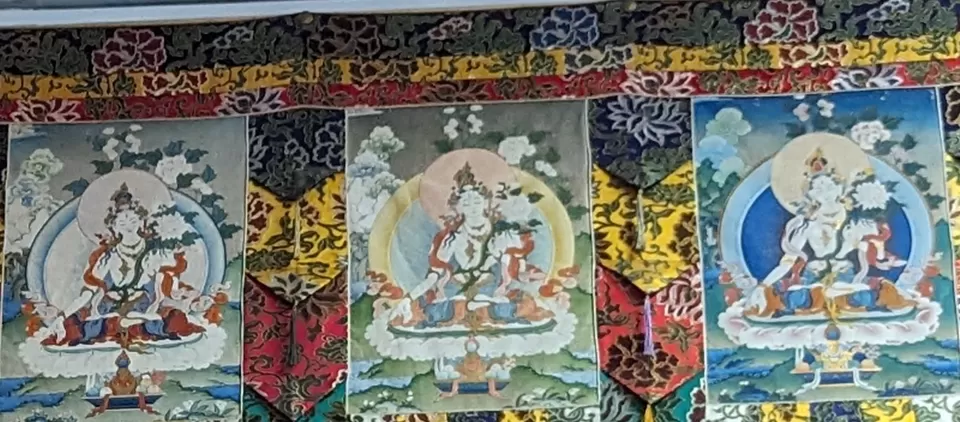
The above picture depicts White Tara who one of the many deities of Tibetan Buddhism that appears as a female bodhisattva or as a female Buddha . She is known as the "mother of liberation", and represents the virtues of success in work and achievements.
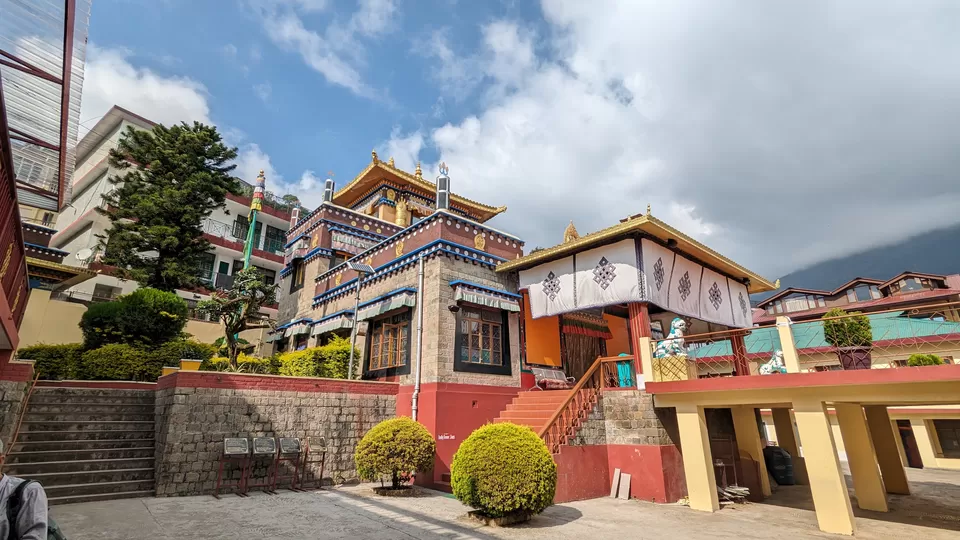
Another fascinating aspect of Tibetan Buddhism is the Nechung Oracle. The Nechung Dorje Drayang Ling Monastery has an important role in Tibetan culture and history, dating back centuries, as the seat of Nechung, the Chief State Oracle of Tibet. Apart from McLeod Ganj, the Nechung Dorje Drayang Ling, has also been established in Hawai`i, and it is a center for the dissemination of the Buddhist teachings and continues to have close ties with the Nechung Monastery in McLeod Ganj, India.
Nechung Oracle: Like many ancient civilizations of the world, the phenomenon of oracles remains an important part of Tibetan culture. Tibetans rely on oracles for various reasons. The purpose of the oracles is not just to foretell the future. They are called upon as protectors and sometimes used as healers. However, their primary function is to protect the Buddha Dharma and its practitioners. In the Tibetan tradition, the word oracle is used for an entity which enters those men and women who act as mediums between the human and the spiritual realms. The mediums are, therefore, known as kuten, which literally means, "the physical base." The Nechung Oracle’s role as protector of Tibet began in the eighth century when the first Oracle was appointed as the protector of Samye Monastery in Lhasa by Padmasambhava, the historical founder of Tibetan Buddhism.
Day 3. A Walk Through Naddi Village and the Gaddis of Himachal
Our guide, Vikas, took us for a village walk through Naddi village - This quaint and serene village provides some of the best views of the nearby terrain. It is located at an altitude of 2000 meters above sea level, in the upper reaches of the Kangra valley. Largely Gaddis live here who are one of the oldest indigenous communities of the state. Traditionally herders of sheep and goat, a lot of them have now taken to settled agriculture or jobs related to tourism industry like guides, taxi drivers and restaurant owners. They are largely found in small villages strewn along the Dhauladhar range, as well as Mandi, Kangra and Bilaspur District. Our guide, Vikaas, who too is a Gaddi had a very interesting legend to tell about Gaddis. They believe themselves to be the chosen devotees of Lord Shiva who made them the care takers of His royal seat at Gadderan (Chamba and Bharmaur), the homeland of Gaddis. Gaddis are one of the oldest indigenous communities of the Himachal Pradesh and traditional herders of sheep and goats. According to the Gaddis, Shivabhumi – the land of Shiva stretches from Bharmour to Mount Kailash. They believe that Shiva resides for six months in Mount Kailash and in winter moves into the netherworld. The nomadic Shiva has patterned the life of his devotees after his own. Hence the Gaddis spend the summers in the villages of Gadderan with their herds and move down to the valleys of Kangra in the winters.
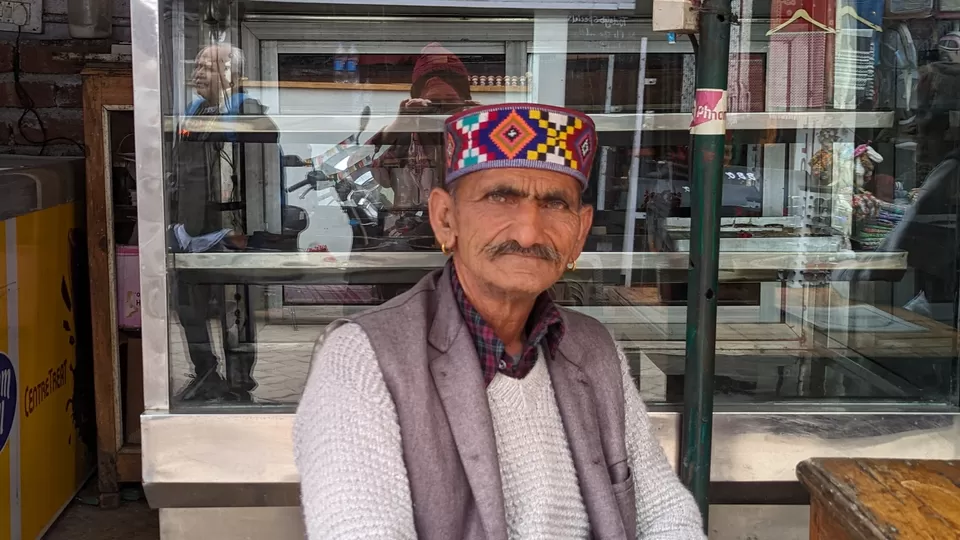
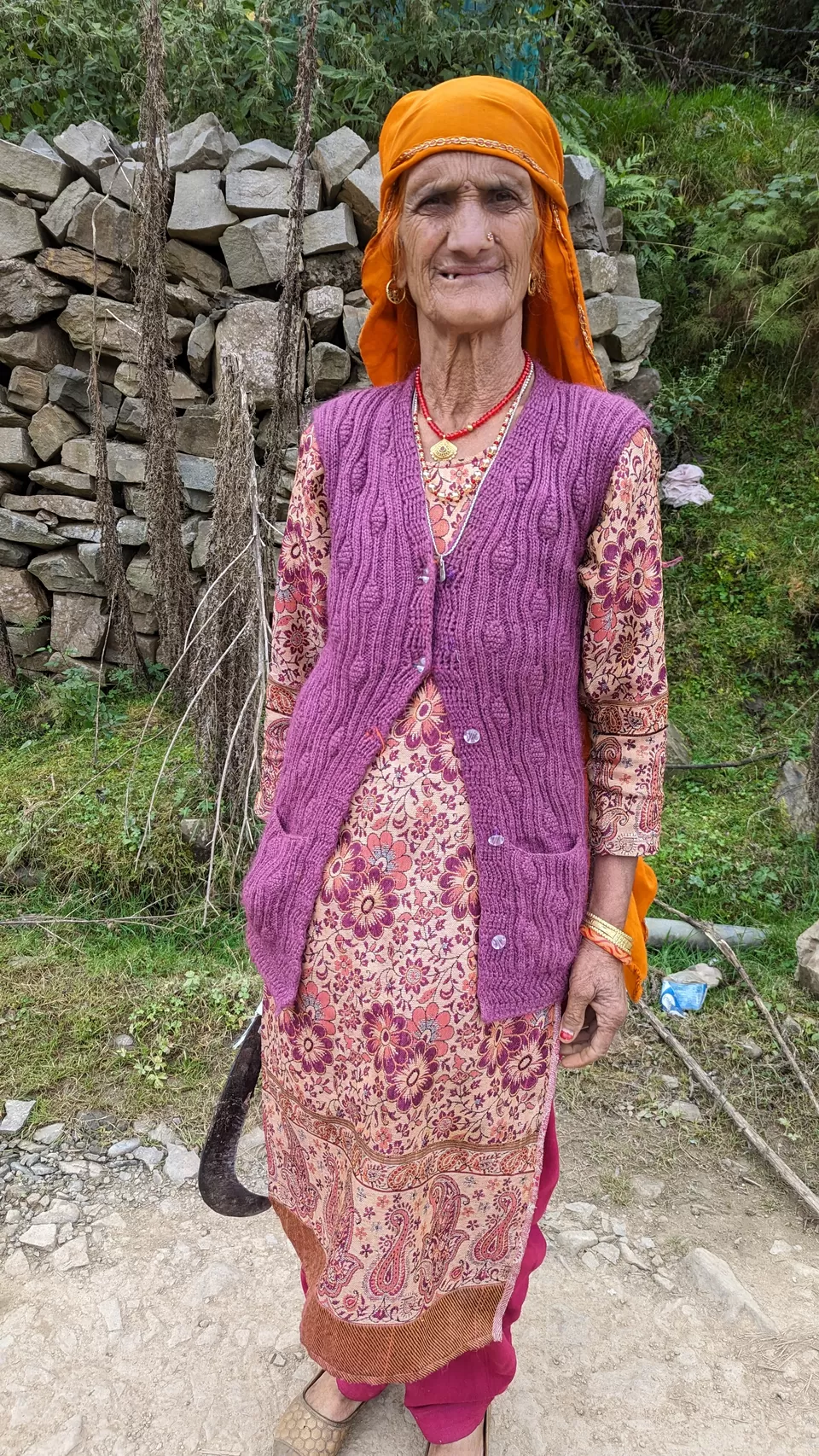




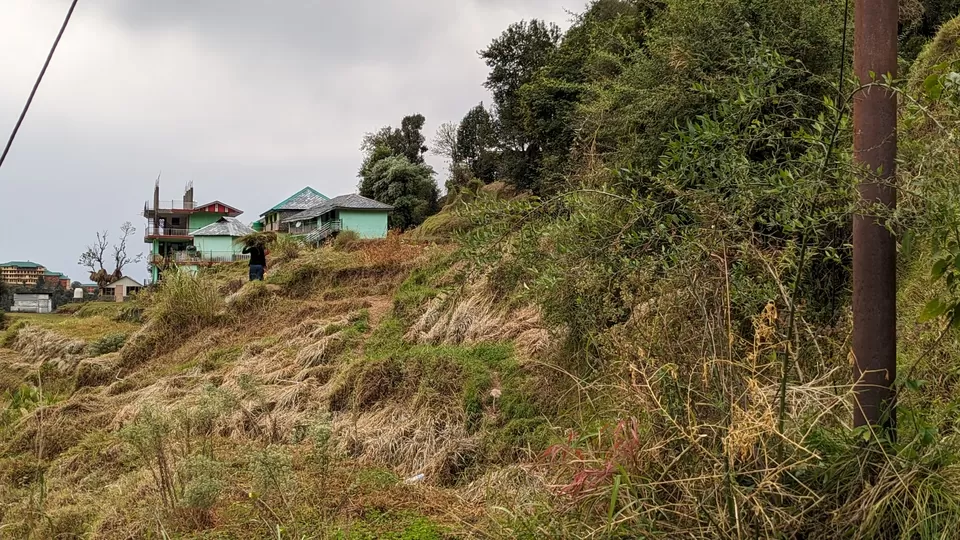


Forest Walk
Along our way to Naddi we trekked through dirt roads and forested hills - among tall Pine and Deodar trees, along mountain brooks and ferns, wild forest flowers and birds:
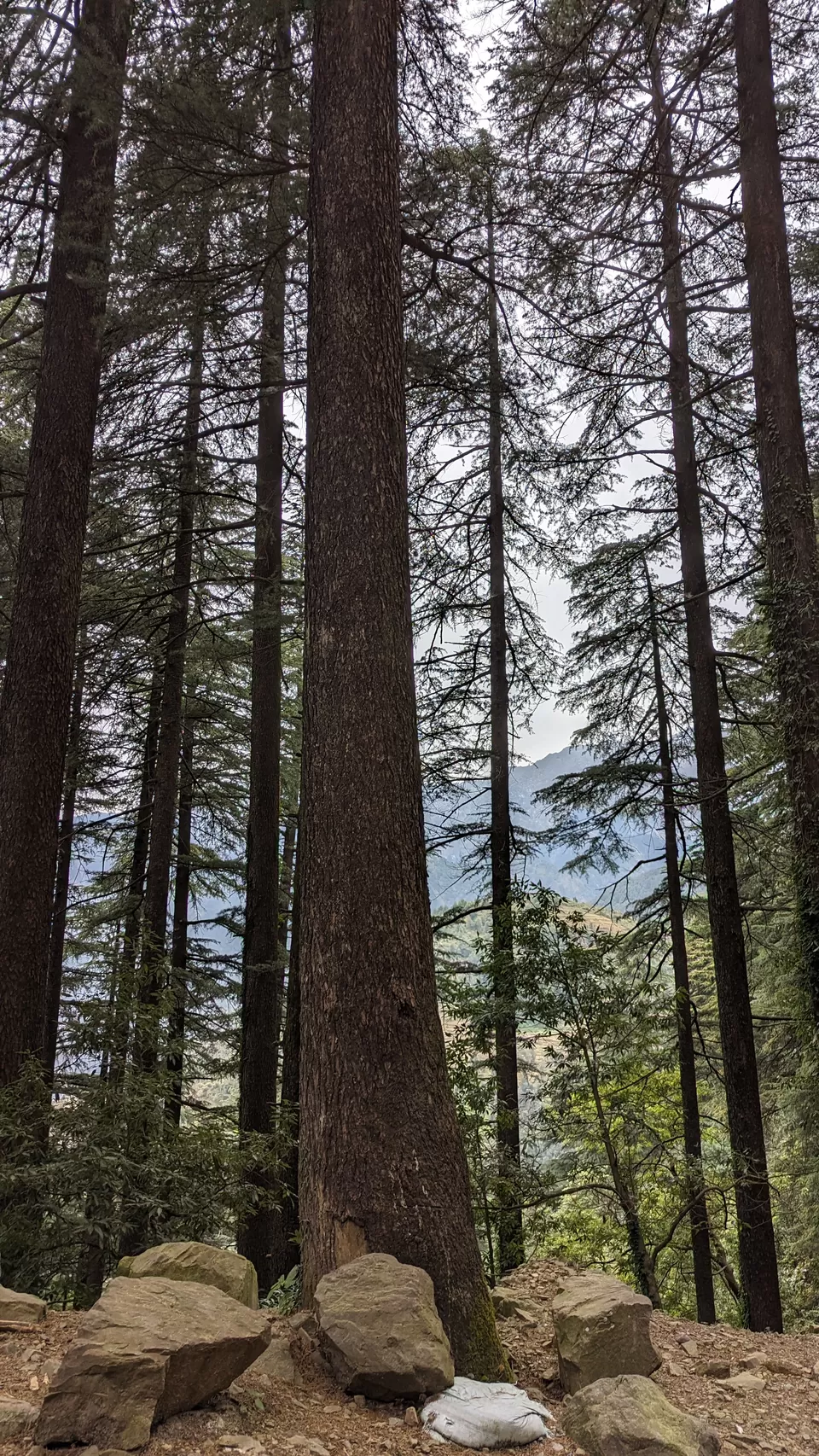









Day 4.
Bir Billing and Bhagsunath
Bir Billing:
Bir (Paragliding landing area is 8020 feet's from sea level) to Billing (Paragliding Take off point is 4350 feet's from sea level) which is 18 km apart from each other. This is the world's second best place for paragliding. We hired the services of Yash Thakur, a paragliding expert and had an enthralling experience. We had to reach Bir in the morning from where the guide drove us to the take off point at Billing. The package also include still photos and videos of our entire paragliding ride.

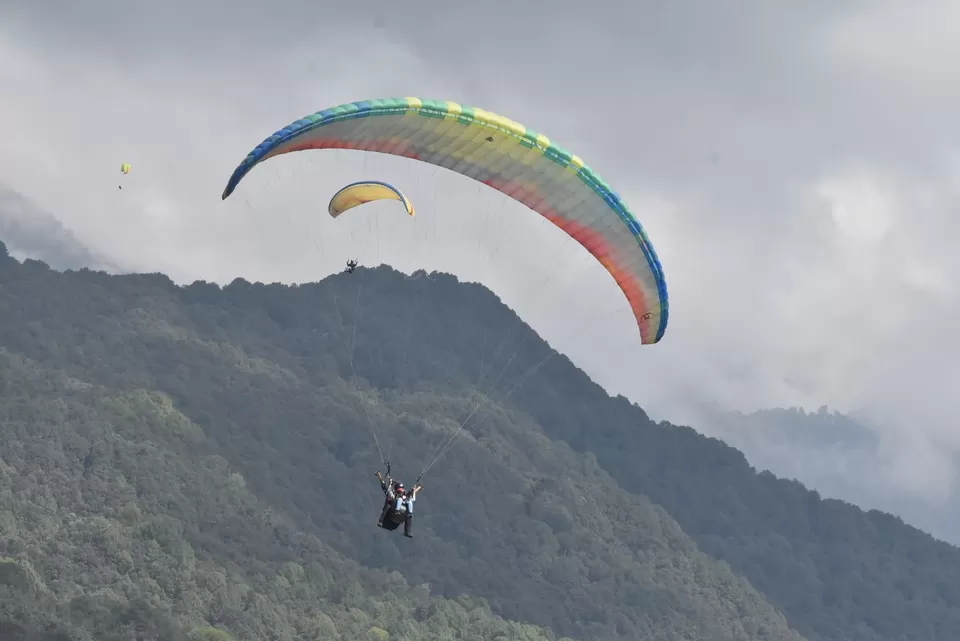
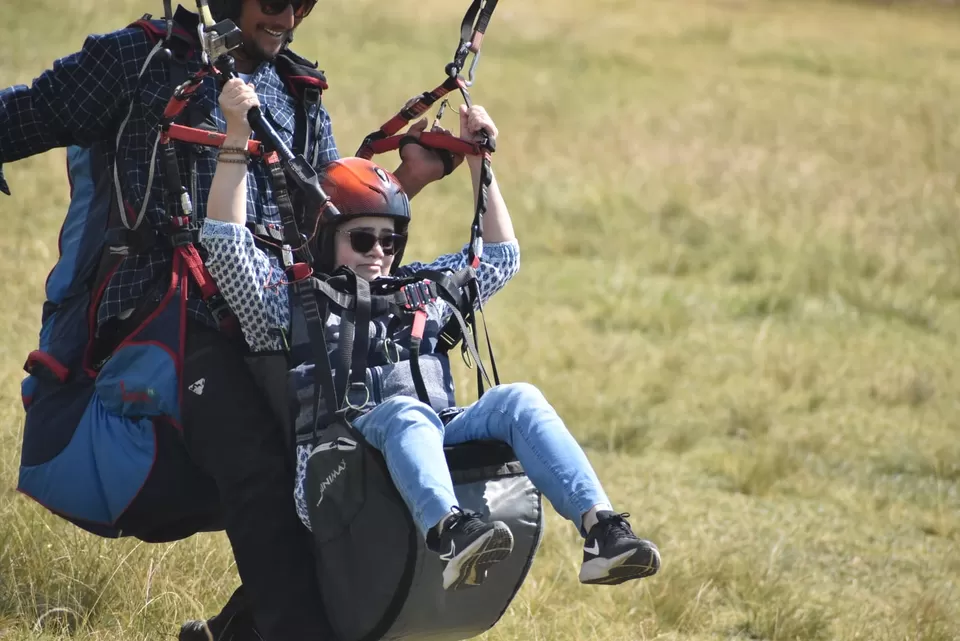
Bhagsu/Bhaksu (also known as Bhagsunag or Bhagsunath) is a village near McLeod Ganj in Dharamshala . Two main attractions here are Bhagsunag waterfall and the ancient Bhagsunag Temple.







Dharamshala or the Pilgrims Rest House has lived up to its name, welcoming weary travelers in search of the Sacred. The upper half of the town, better known as McLeodganj offers a collage of noisy bazaars with Tibeten refugees, Kashimiris and the local Gaddis selling religious trinkets - aides to the path to Nirvana, as they would have you believe! At the Main Square of McLeodganj stands a bust of Sardar Patel, around which you will see taxi drivers and guides trying to solicit customers, foreigners hustling for weed, lamas and Buddhist nuns jostling with tourists out shopping for daily grocery or religious souvenirs. In the background to this lively chaos rise the roofs and flags of Buddhist monasteries signaling to you that in the midst of sansar one's mind should stand still. And if the Monastries and Temples here do not conquer your pilgrim's soul you can always continue onwards towards valleys and hills that lie at the foot of the snow-clad Dhauladhar Range where the Pine forests and mountain streams reverberate with spirituality bereft of rites and rituals.
Some beautiful landscapes of Kangra Region:

